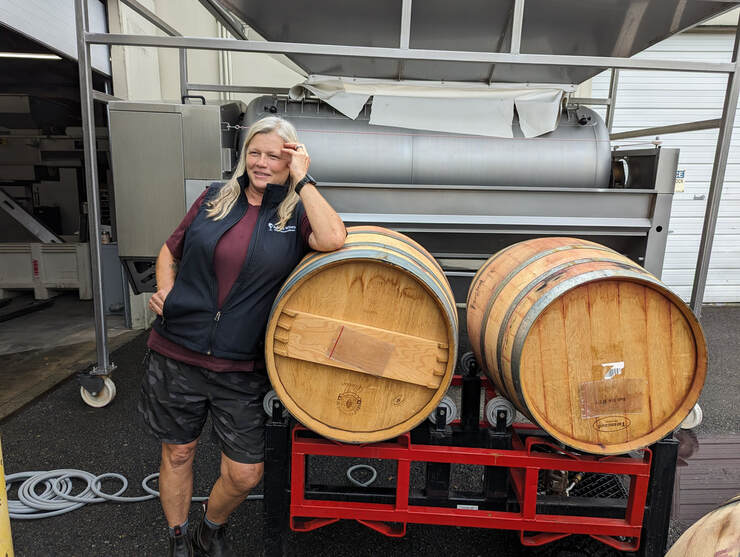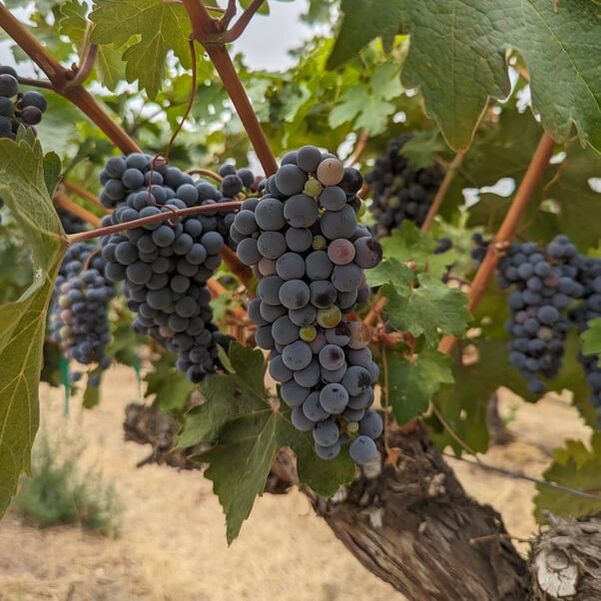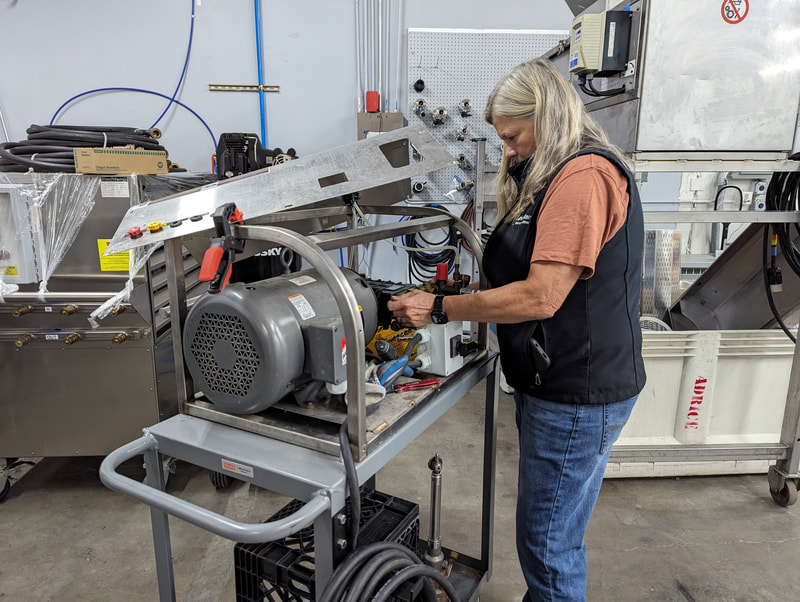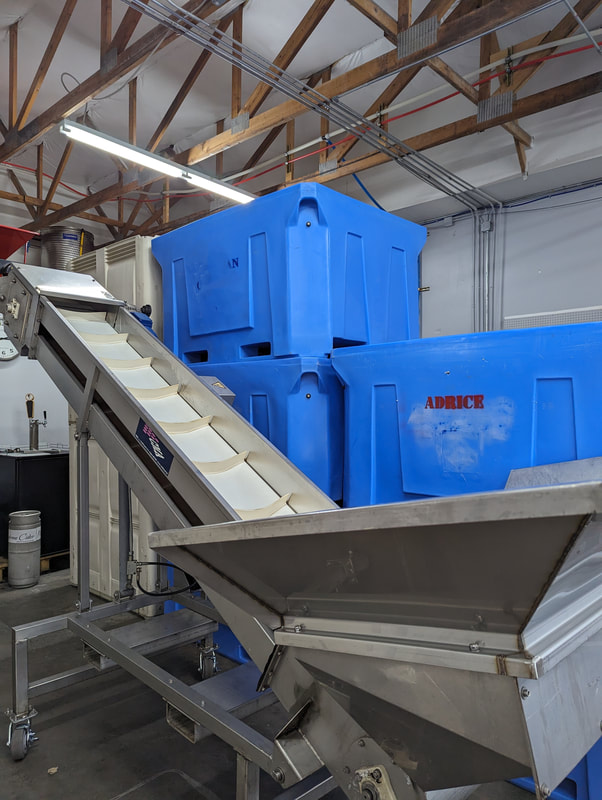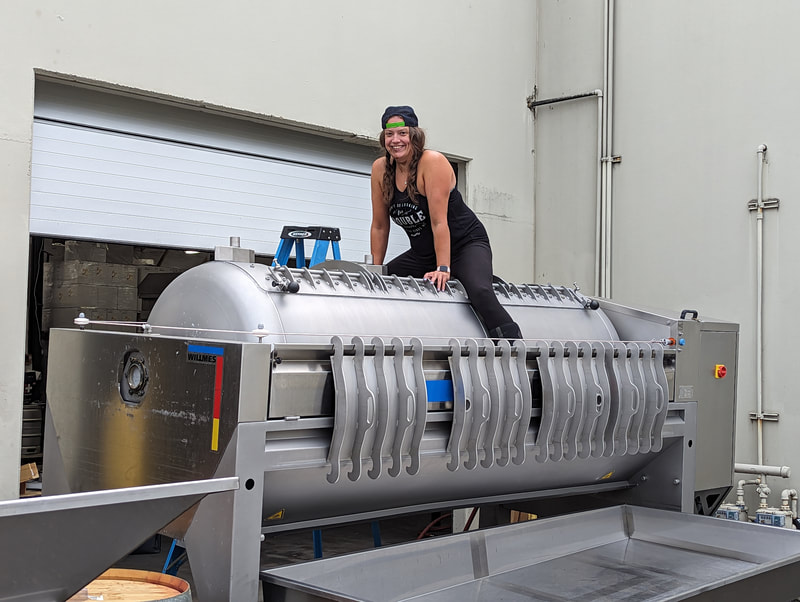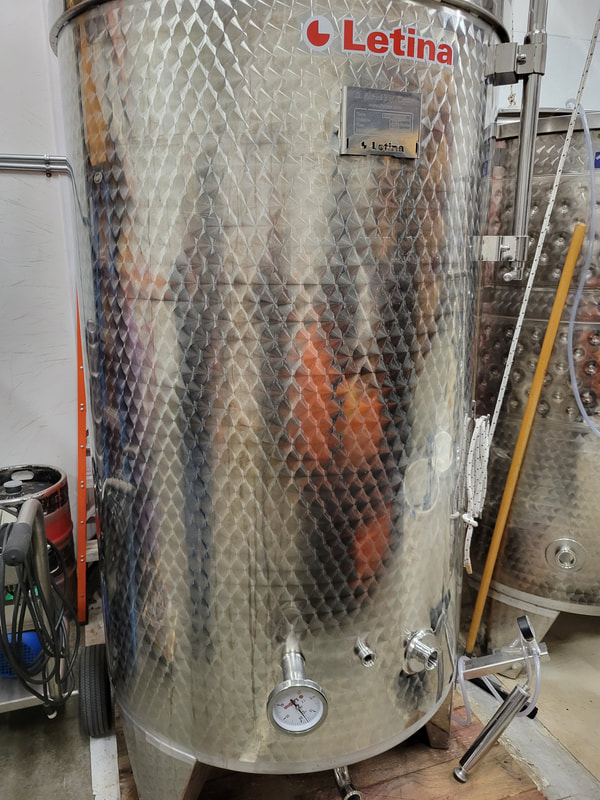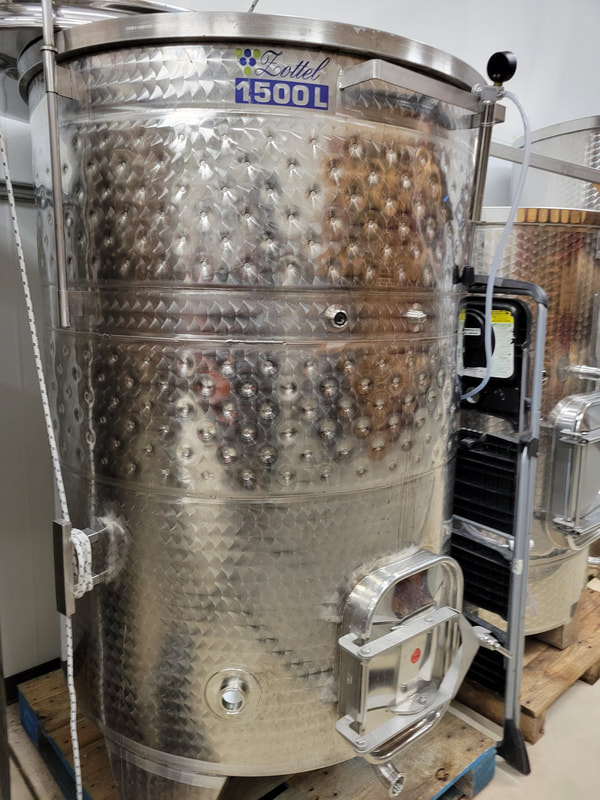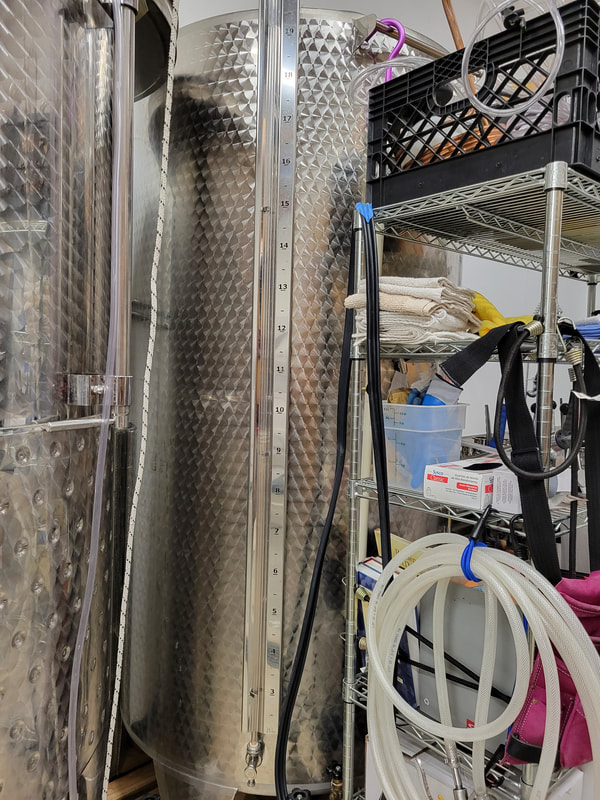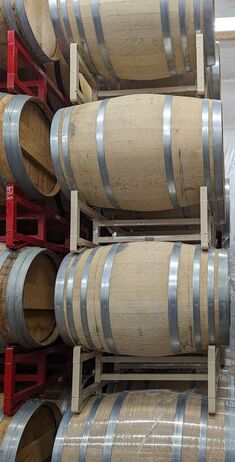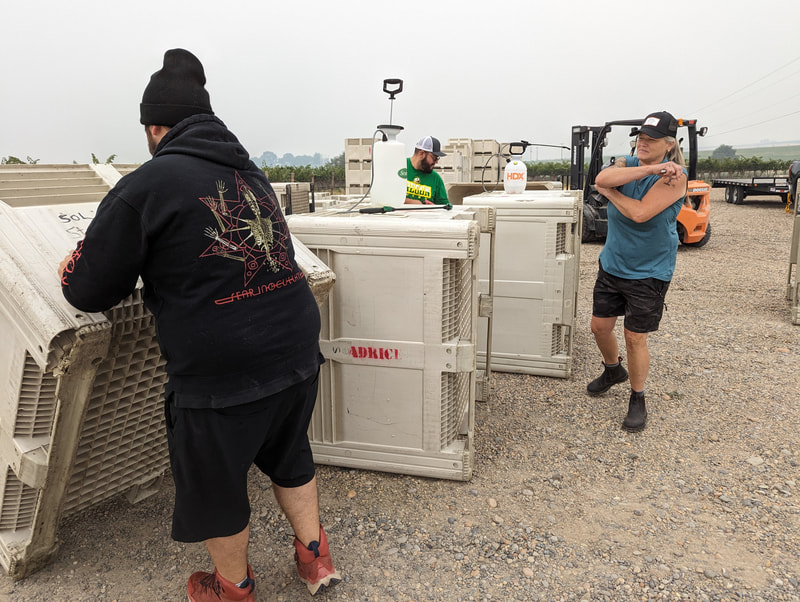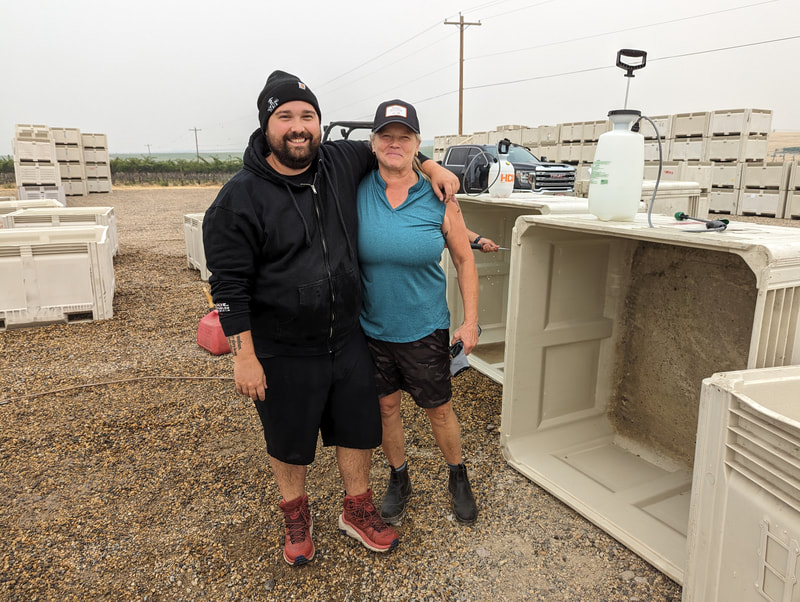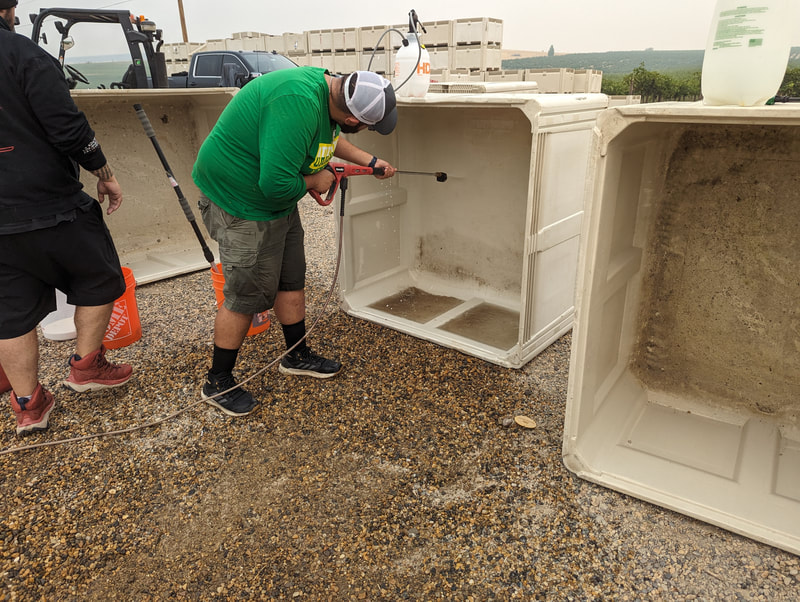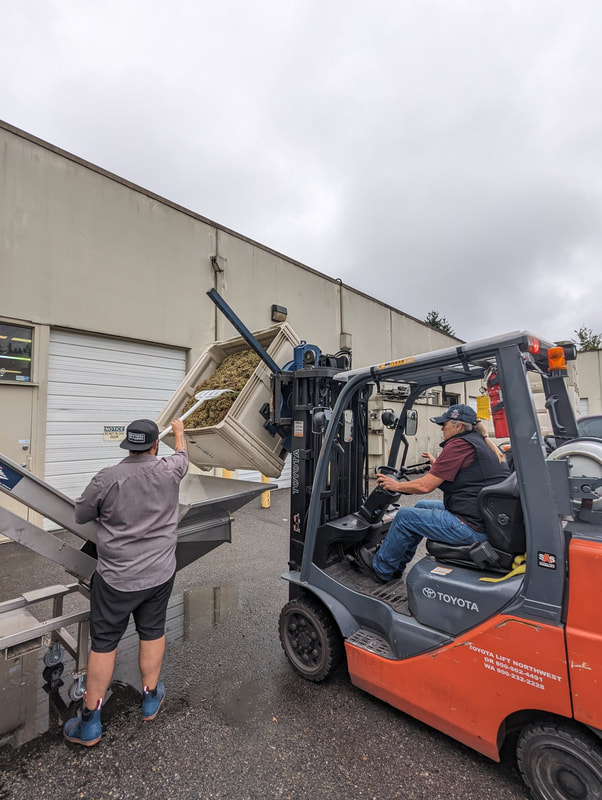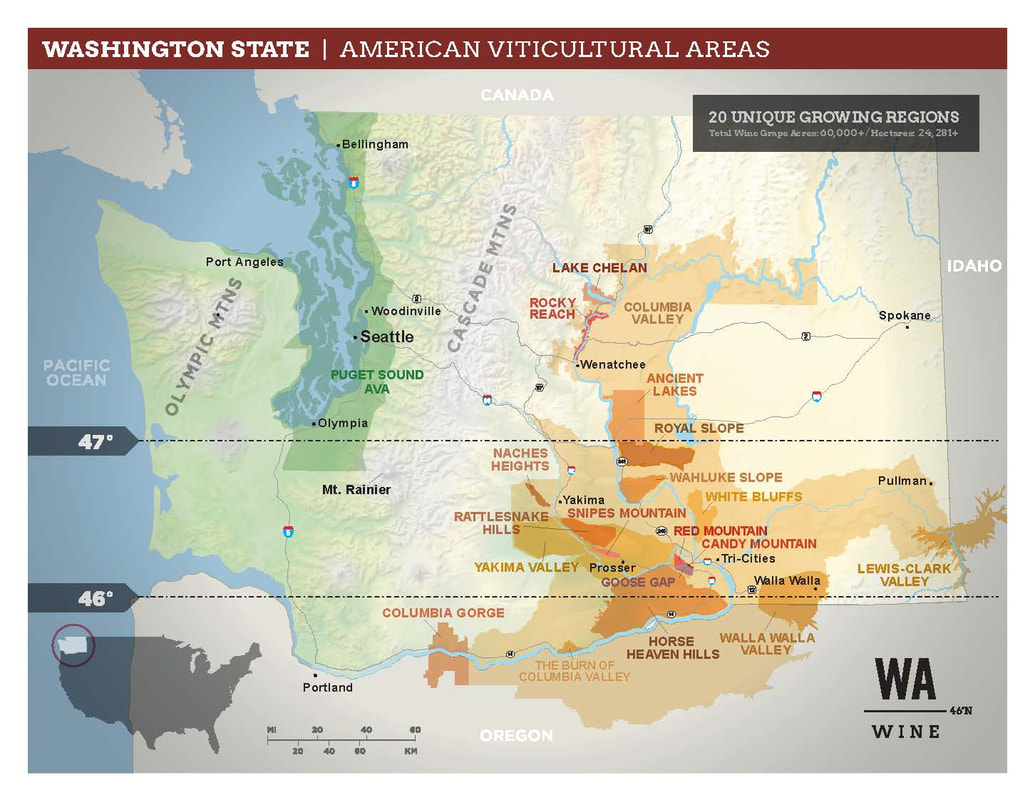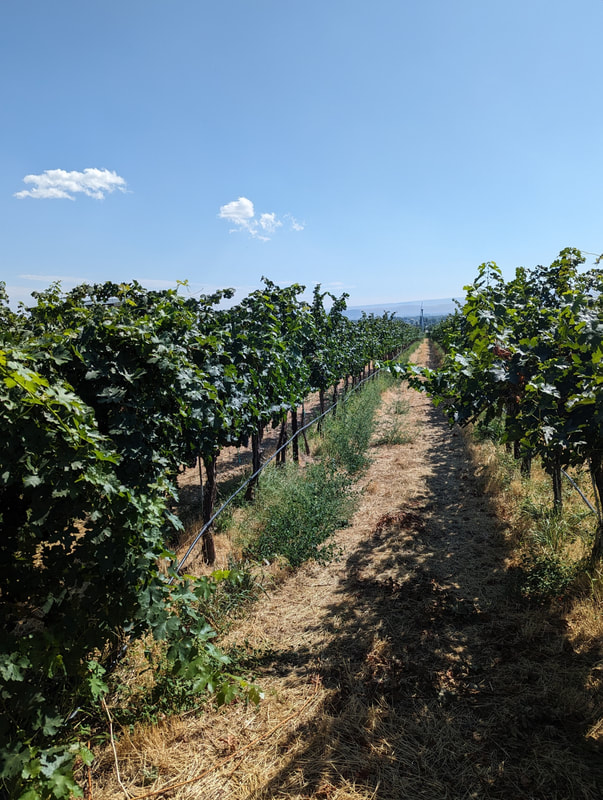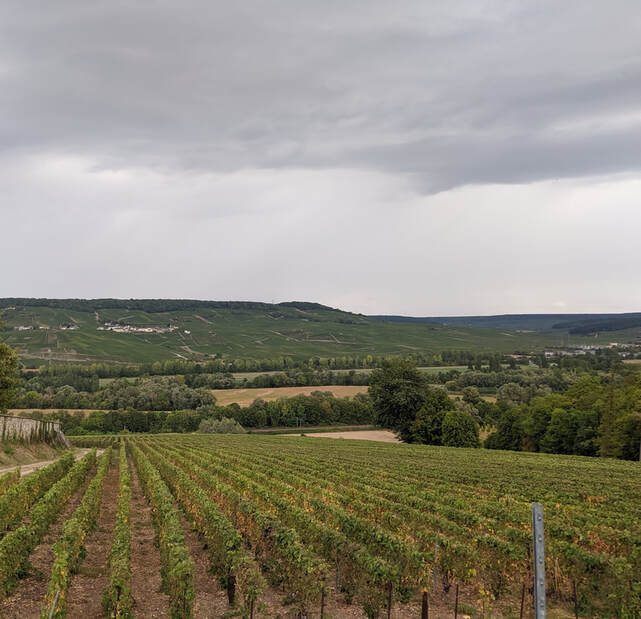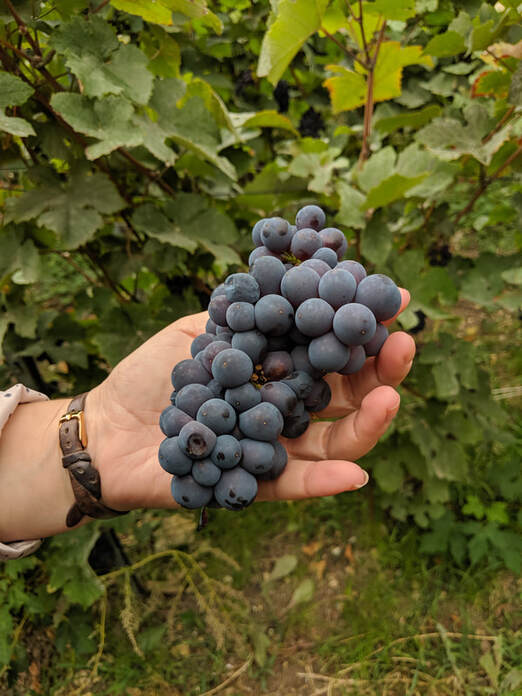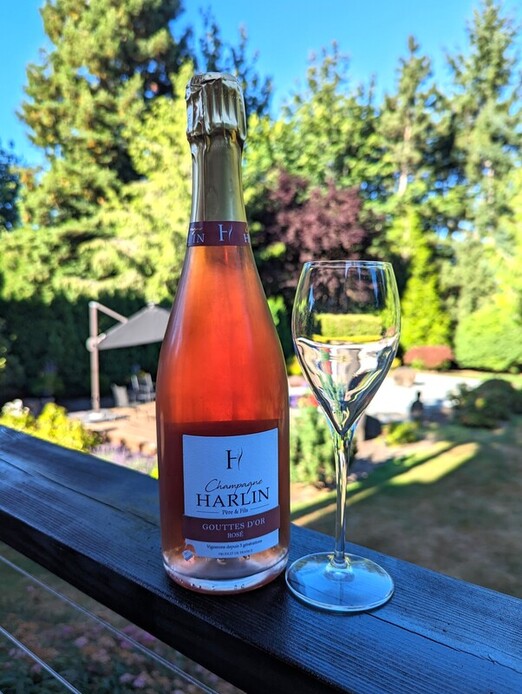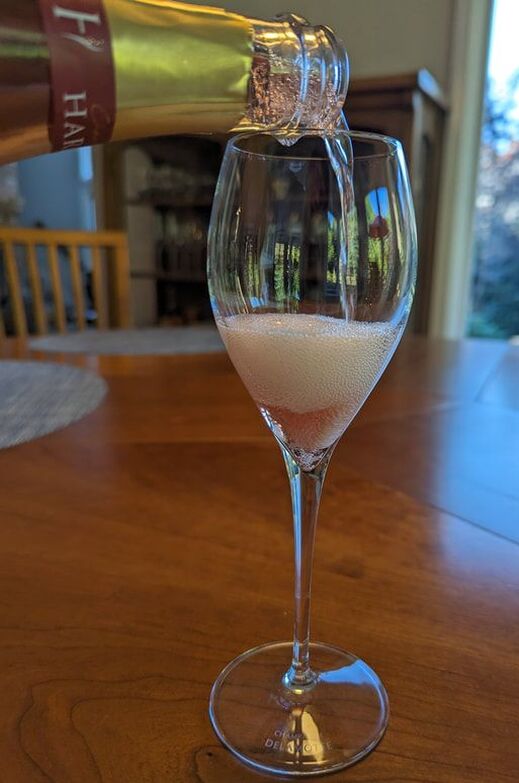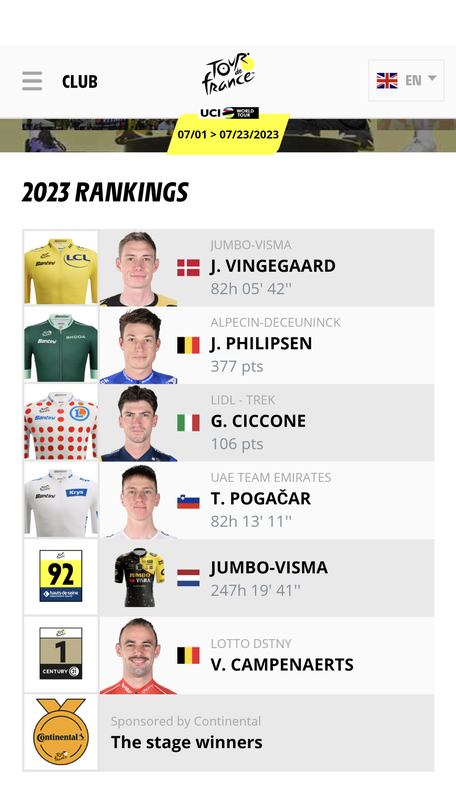|
My goal for this series ‘Harvest 2023’ is to discuss the physical and intellectual muscle required to make wines of quality and note. Adrice Wines in Woodinville, Washington, a women-owned winery with a woman winemaker, has agreed to allow me to follow winemaker Pam Adkins through the 2023 harvest. Pam Adkins, owner/winemaker, and Julie Bulrice, owner/sales and marketing, make award-winning wines from 20-plus grape varieties in multiple areas of the Columbia Valley in Washington State. A bit of context for Washington state wine: many winemakers purchase grapes from vineyard growers rather than owning vineyards. Usually, winemakers have long-term contracts with vineyards and collaborate to produce grapes that will develop into the wines the winemaker seeks to create. Vineyard managers and their incredible staff are farmers who grow grape vines and manage them in winter, spring, and summer into fall harvest. This relationship between winemaker and grower has been the model in Washington since the 1970s when wine production began to expand. During the end of July and August, wineries and vineyards are getting ready for their busiest time of year, the harvest of Washington state wine grapes. I asked several winemakers what it takes to prepare for harvest; universally, their first response was “cleaning.” Every piece of equipment and its components must be inspected to ensure it is in good working order, then thoroughly cleaned and sanitized to be ready when the fruit arrives in the winery. Comments were, “Cleanliness is the most important aspect of winemaking and the least glamourous.”; and “Cleanliness is next to godliness.” Keeping unwanted bacteria out of the winery is vital to making good wines. These are sentiments winemakers live by, but particularly during harvest. The staff inspects the crusher/de-stemmer gears and motors to ensure that grapes move through the first process without issues, then it's cleaned for harvest. The grape press is also inspected to ensure electronic controls and the press bladder work efficiently so grapes can be pressed to juice, meeting the winemaker’s specifications. Issues discovered with motorized equipment must be repaired quickly, so often, the winemaker or the cellar master is the repair person. In a winery that produces 3000 to 5000 cases of wine per year, you will likely find 3 or 4 pumps with 6 to 8 hoses of long lengths, many valves, and multiple collars of varying sizes, all required to move grape juice/wine between the press, fermenters, tanks, and barrels. All items must be in proper working order with no leaks or faulty parts; everything must be cleaned, sanitized, and stored until required. Continuing with the to-do list, in no particular order, stainless steel tanks must be cleaned and sanitized. At Adrice Wines, there are about eight tanks to be scrubbed clean and sanitized by someone climbing into the tank to do the work. Then there are the fermenters, each holding about 1 ton of grapes/juice. There are 15-20, and all must be cleaned and sanitized. Every time a vessel is emptied during harvest, or anytime for that matter, it must be cleaned and sanitized, including the hoses, clamps, collars, and valves. From August through December, it is never-ending work. Most tasks are completed in the winery facility. However, for Adrice Wines, picking bins are stored in vineyards. The picking bins are cleaned, sanitized, and distributed to vineyards where Pam purchases grapes for the vineyard workers to fill during harvest. This work often happens during Pam’s vineyard visits when surveying grape conditions and maturity. Harvest began at Adrice Wine’s custom crush operation on August 21st with Sauvignon Blanc from Red Mountain, an AVA near Benton City, WA. White wine grapes generally ripen before red grapes.
Next, we discuss preparations for harvest in the vineyard. Cheers! Introducing a deep conversation about the 2023 Washington State wine grape harvest. I am excited to delve into the 2023 vintage and discuss many aspects of what it takes to make wines of note. This 15-part series will discuss questions about winemaking, the winery, the grapes, and how they become wine. I will discuss these questions and others with Winemaker Pam Adkins of Adrice Wines, as well as other winemakers in Washington. I invite you to join the discussion with your comments below or on Instagram. Washington is a special place to grow wine grapes and make wine. We grow over 80 grape varieties planted on over 60,000 acres, in 20 AVAs (American Viticultural Area), with soils and climate different in each AVA. Washington is the 2nd largest wine grape producer in the United States and has over 1,000 wineries. The wine-grape harvest generally begins in late August. Usually, white wine grapes: Riesling, Sauvignon Blanc, Chardonnay, Albarino, Roussanne, and Marsanne, to name a few, ripen before the red wine grapes: Cabernet Sauvignon, Syrah, Merlot, Grenache, Malbec, Italian varietals, and many others. The 2023 growing season and harvest look ‘normal’ in some of the state’s AVAs and a bit unusual in other places; we will discuss this during the coming weeks. Join the discussion as we look at preparations in the winery, preparations at the vineyards, how the grapes get to the winery, how the magic happens, and grapes turn into wine. I will post weekly beginning August 24 through the end of harvest, a date sometime in mid-November. Farmers and winemakers are busy preparing for the harvest. I will highlight these preparations in my next post.
Cheers! July 23, 2023, STAGE 21 The Finalé The 2023 Tour de France ends today, July 23, 2023. Overnight the riders and all 1600-plus people supporting the race fly or drive from Le Markstein Fellering in the Alsace region in northeastern France to Saint-Quentin-En-Yvelines and the center of Paris for the Grand Finalé along the Champs-Elysées. On their way to the Finalé, they all passed through or over the region of Champagne. At the end of the day, almost everyone will raise a glass of Champagne to celebrate the winners and riders who finished a 3-week, 21-stage road race over 3404 KM. Champagne is wine made in the traditional method of Champagne. Creating a sparkling wine from a still wine, principally made from the grape varieties of Chardonnay, Pinot Meunier, and Pinot Noir. Unless the sparkling wine is from the Champagne region of France, it is not to be called Champagne; it can be called sparkling wine, Crémant, or sparkling wine made in the traditional method of Champagne, but not Champagne. When celebrating an event such as the Finalé of the Tour de France, one should most certainly drink Champagne. Today I opened a Champagne Harlin Pére & Fils, NV Cuvée Gouttes d’Or Rosé. A beautiful assemblage of 35% Chardonnay, 40% Pinot Noir, and 25% Pinot Meunier with fresh red raspberry, red cherry, and blackcurrant aromas bubbling to the delicate fruity round bubbly mouthfeel. The perfect summer celebration wine. Champagne Harlin is a grower of champagne. The winemakers are the vineyard owners. They have been growing chardonnay in Epernay, France, since 1969. The first release of the House Cuvée Goutte d’Or Rosé in 1999. All of the leaders of the 2023 Tour de France were known coming into the Finalé; they only needed to complete today’s stage to claim their wins. JORDI MEEUS was the somewhat unexpected winner of stage 21. Winning the sprint to the line on the Champs-Elysées over Jasper Philipsen. The overall race standings remained the same as yesterday. Congratulations to the winners of the race and all of the riders who rode and finished the 2023 Tour de France.
Santé |
|
© Grapes and Still Waters, 2019-2023
We do not sell or share your information.
We do not sell or share your information.
